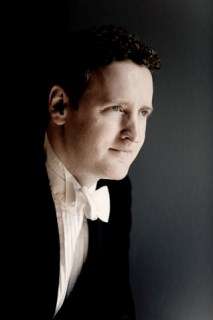|
Back
Rachmaninoff Trumps Horner Houston
Jones Hall
03/31/2016 - and April 2, 3, 2016
Erich Wolfgang Korngold: Overture to The Sea Hawk
James Horner: Collage
Sergei Rachmaninoff: Symphonic Dances, Op. 45
David Pyatt, William VerMeulen, Richard Watkins, Robert Johnson (horns)
Houston Symphony, Michael Francis (conductor) 
M. Francis (© Marco Borggreve)
“James Horner plus Rachmaninoff,” as the Houston Symphony’s current offering is billed, should be taken with a grain of salt. The Russian master’s Symphonic Dances certainly is more entree than side dish, against which Horner’s Collage barely registers.
Korngold’s The Sea Hawk Overture, cobbled together from one of his most memorable film scores, kicked off the evening with appropriate fanfare. The brilliance of the score was brought vividly to life by the orchestra and conductor Michael Francis, who managed to make sense out of Korngold’s rather lose, episodic curtain-raiser.
Even four of the finest horn players on the planet—the HSO’s own principal, William VerMeulen, and associate principal, Robert Johnson, joined by British stars David Pyatt and Richard Watkins—couldn’t make James Horner’s Collage compelling. A twenty-minute moderato morass, the four-square rhythmic content and phrasing of the work, lack of harmonic and dramatic goals, and shortage of truly virtuosic demands from the four virtuosi contradicted the work’s title and genre. We expected a variety of musical materials juxtaposed in imaginative ways to create an artistic whole, but Horner delivered a bland, monotonous piece of sonic wallpaper. Better horn playing couldn’t have been asked for, but excellent blend and glorious tone often got lost in Horner’s gray orchestration, which pleaded for a sound engineer to correct its imbalances. It was a true pity; Schumann’s Konzertstück would have been a much better use of this foursome’s enormous abilities.
After intermission, Francis led a solid account of Rachmaninoff’s Symphonic Dances. If the first two movements had their shaky moments—occasional woodwind intonation issues in the first, ragged brass incipits in the second—the orchestra came alive in a taut, vigorous finale. Clearly relishing the structural integrity and timbral ingenuity of the score, the hall resounded with Rachmaninoff’s defiantly victorious “Alleluia,” ending the concert on a high note.
Marcus Karl Maroney
|